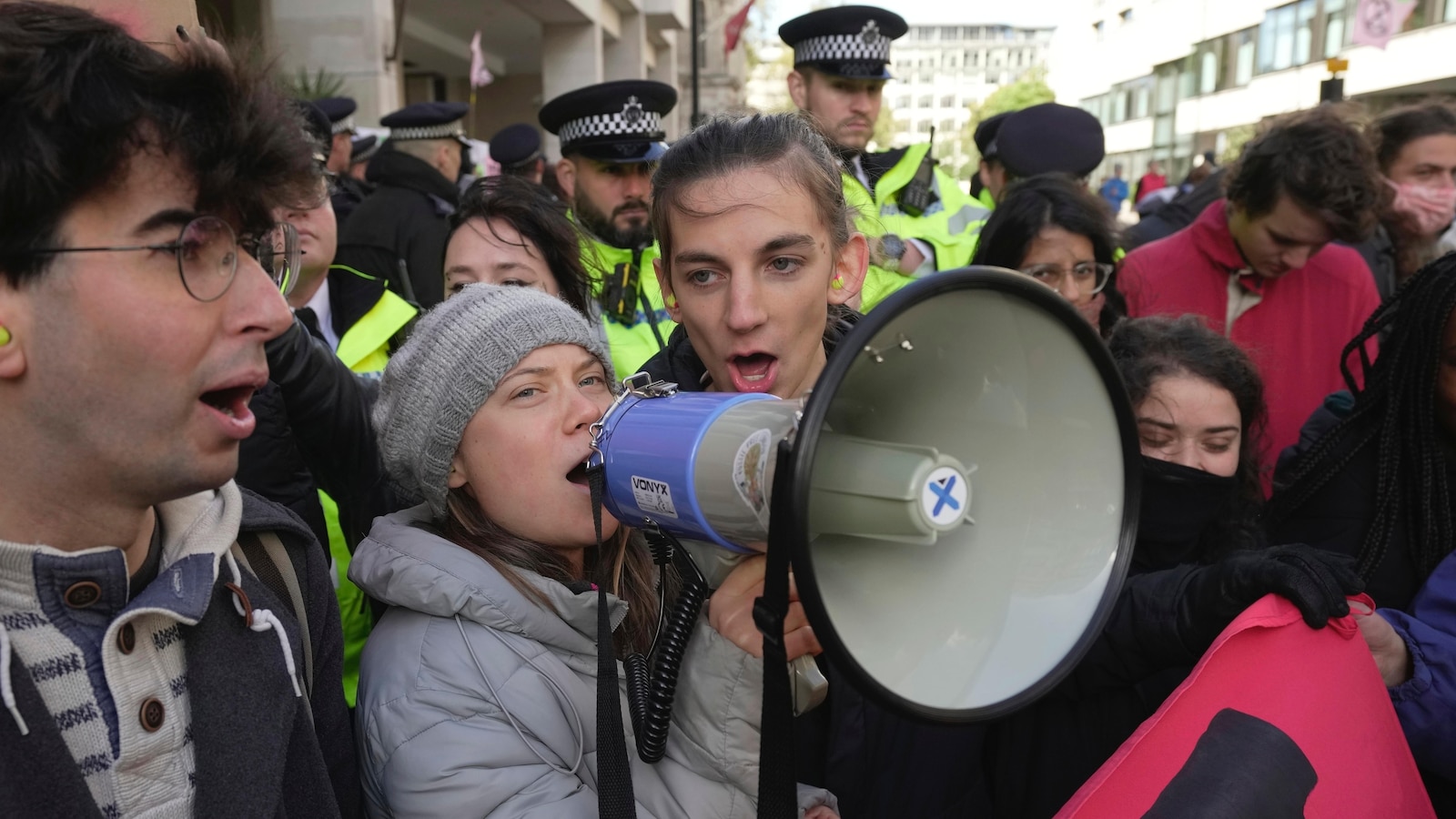
NEW YORK — Activists geared up Friday for protests around the world to demand action on climate change just as a pair of major weeklong climate events were getting underway in New York City.
The planned actions in Berlin, Brussels, Rio de Janeiro, New Delhi and many other cities were being organized by the youth-led group Fridays for Future, and included the group’s New York chapter, which planned a march across the Brooklyn Bridge followed by a rally that organizers hoped would attract at least 1,000 people. More protests were planned Saturday and Sunday.
New York is hosting Climate Week NYC, an annual event that promotes climate action, at the same time the U.N. General Assembly takes up the issue on several fronts, including raising trillions of dollars to aid poorer countries suffering the most from climate change.
The New York protest was to take aim at “the pillars of fossil fuels” — companies that pollute, banks that fund them, and leaders who are failing on climate, said Helen Mancini, an organizer and a senior at the city’s Stuyvesant High School.
Youth climate protests started in August 2018 when Greta Thunberg, then an unknown 15-year-old, left school to stage a sit-down strike outside of the Swedish parliament to demand climate action and end fossil fuel use.
In the six years since Thunberg founded what became Fridays for Future, global carbon dioxide emissions from the burning of fossil fuels has increased by about 2.15%, according to Global Carbon Project, a group of scientists who monitor carbon pollution. The growth of emissions has slowed compared to previous decades and experts anticipate peaking soon, which is a far cry from the 43% reduction needed to keep temperature increases to an agreed-upon limit.
Since 2019, carbon dioxide emissions from coal have increased by nearly 1 billion tons (900 million metric tons), while natural gas emissions have increased slightly and oil pollution has dropped a tiny amount, according to the International Energy Agency. That growth has been driven by China, India and developing nations.
But emissions from advanced or industrialized economies have been falling and in 2023 were the lowest in more than 50 years, according to the IEA. Coal emissions in rich countries are down to levels seen around the year 1900 and the United Kingdom next month is set to shutter its last coal plant.
In the past five years, clean energy sources have grown twice as fast as fossil fuels, with both solar and wind individually growing faster than fossil fuel-based electricity, according to the IEA.
Since Thunberg started her protest six years ago, Earth has warmed more than half a degree Fahrenheit (0.29 degrees Celsius) with last year setting a record for the hottest year and this year poised to break that mark, according to the U.S. National Oceanic and Atmospheric Administration and the European climate agency Copernicus.
___
The Associated Press’ climate and environmental coverage receives financial support from multiple private foundations. AP is solely responsible for all content. Find AP’s standards for working with philanthropies, a list of supporters and funded coverage areas at AP.org.
Youth activists are taking a stand and making their voices heard in the fight against climate change. In recent weeks, young people from around the world have been organizing protests and rallies during major events in New York City to urge world leaders to take action on the pressing issue of climate change.
One of the most notable events where youth activists have made their presence known is the United Nations Climate Action Summit, which took place on September 23rd. Thousands of young people gathered in New York City to demand that world leaders take bold and immediate action to address the climate crisis. The protesters held signs and chanted slogans, calling for policies that prioritize renewable energy, reduce carbon emissions, and protect the planet for future generations.
These youth activists are part of a growing movement of young people who are becoming increasingly vocal and active in advocating for climate action. They are inspired by the leadership of young activists like Greta Thunberg, the 16-year-old Swedish climate activist who has gained international attention for her powerful speeches and school strikes to demand action on climate change.
In addition to the Climate Action Summit, youth activists have also organized protests during other major events in New York City, such as the United Nations General Assembly and the Global Climate Strike. These protests have drawn attention to the urgent need for action on climate change and have put pressure on world leaders to prioritize this issue.
The youth activists involved in these protests are not only raising awareness about the impacts of climate change, but they are also pushing for concrete policy changes. They are calling for governments to commit to ambitious targets for reducing greenhouse gas emissions, transitioning to renewable energy sources, and protecting vulnerable communities from the effects of climate change.
The passion and determination of these young activists are a powerful force for change. They are showing that young people have a crucial role to play in shaping the future of our planet and that they will not sit idly by while their future is threatened by climate change.
As world leaders gather in New York City for these major events, they cannot ignore the voices of these youth activists. The time for action on climate change is now, and these young people are leading the charge to ensure that their voices are heard and that meaningful change is made to protect our planet for future generations.


